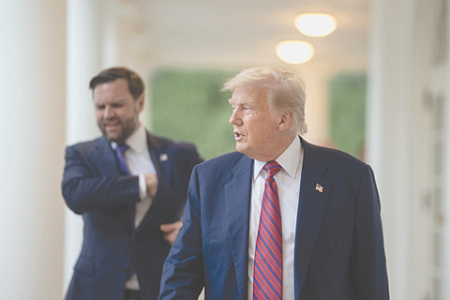
The Trump administration has signaled it may offer Russia an easing of sanctions in exchange for a ceasefire in Ukraine, a groundbreaking proposal discussed with European leaders and Ukrainian President Volodymyr Zelenskyy ahead of a planned summit between President Donald Trump and Vladimir Putin on August 15.
In a video conference designed to align with key allies, President Trump and Vice President J.D. Vance briefed heads of European Union countries and President Zelenskyy on the agenda for the upcoming high-stakes meeting. The briefing followed a period of diplomatic friction after Washington arranged the summit, reportedly without prior consultation with its European partners, leaving them uninformed about the location and substance of the talks.
According to media leaks preceding the call, the US-Russia summit is slated to take place at the Elmendorf-Richardson joint military base in Anchorage, Alaska. The choice of a secure military facility is seen as a move to deter potential protests and carries symbolic weight, as the base’s namesake, General Wilds Preston Richardson, led a US expeditionary force in Northern Russia in 1919.
The core of the potential deal was illuminated by US Treasury Secretary Scott Bessent, who told Bloomberg that President Trump would make it clear to Putin that “all options” are being considered regarding sanctions. Bessent emphasized that punitive measures could be “tightened, eased, or have expiration dates,” suggesting that any relief would be contingent on cooperation from the Kremlin. This was echoed by reports from Sky News, which, citing sources, claimed EU leaders were discussing a proposal to offer Russia sanctions relief if it agrees to an immediate 15-day ceasefire that evolves into a sustained cessation of hostilities.
This potential diplomatic path is fraught with complexity. Officials have not specified which sanctions could be lifted, a critical detail given the political and legal hurdles involved. While a US president can reverse some sanctions by executive order, many of the most significant measures were enacted by Congress and would require a lengthy and politically perilous legislative process to repeal. The history of the Jackson-Vanik amendment, which restricted trade with the Soviet Union and remained in place against Russia until 2012, long after its original cause was resolved, illustrates the difficulty of rolling back such policies.
European leaders have reacted with caution. Following the video conference, German Chancellor Friedrich Merz stressed that a ceasefire must be the absolute first step before any other discussions can proceed. He firmly stated that the “legal recognition” of any Russian-annexed territories is “not up for discussion.” Merz also insisted on Kyiv’s central role in any peace process, telling reporters, “We made it clear that Ukraine must be at the negotiating table if there is a next meeting after this one.” It remains uncertain whether President Trump, who is scheduled to speak with Zelenskyy immediately after the Alaska summit, will heed this call for Ukraine’s direct inclusion.
